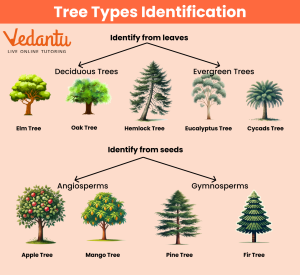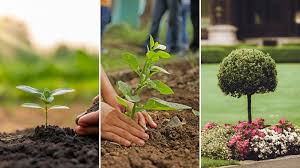Planting trees is one of the most rewarding activities for gardeners, homeowners, and environmentalists alike. Trees provide shade, improve air quality, offer habitat for wildlife, and enhance property value. However, planting trees successfully involves more than just digging a hole and placing a sapling in the ground. Different types of trees—deciduous, evergreen, fruit, and ornamental—have unique requirements and planting techniques. Understanding these distinctions is crucial to ensuring healthy growth and long-term survival.
1. General Steps for Planting Any Tree
Before delving into specific types, it’s essential to understand the general process of planting trees:
Step 1: Choose the Right Tree for Your Location
Consider your climate, soil type, sunlight availability, and space constraints. Some trees thrive in full sun, while others prefer partial shade. Soil pH, drainage, and nutrient levels also influence tree health.
Step 2: Select a Healthy Sapling
Buy from reputable nurseries. Look for a strong central leader, healthy leaves, and no signs of disease or pests.
Step 3: Prepare the Site
Clear the area of weeds, rocks, and debris. Dig a hole twice as wide as the root ball and about the same depth. Avoid digging too deep, as planting too low can suffocate roots.
Step 4: Place the Tree
Remove the tree from its container gently. Loosen the roots if they are circling the root ball. Position the tree so the top of the root ball is level with the surrounding soil.
Step 5: Backfill and Water
Fill the hole with native soil, firming it gently to remove air pockets. Water thoroughly to settle the soil.
Step 6: Mulch and Stake (if necessary)
Apply a 2-4 inch layer of mulch around the base, keeping it a few inches away from the trunk. Stake young trees in windy areas, but remove stakes after the first year.
2. Planting Deciduous Trees
Deciduous trees, such as maples, oaks, and birches, shed their leaves annually. They are ideal for providing shade in the summer and allowing sunlight in winter.
Best Time to Plant:
-
Early spring or fall, when the tree is dormant and less stressed.
Tips:
-
Choose species suited to your USDA hardiness zone.
-
Prune only dead or broken branches at planting time.
-
Ensure proper spacing, especially for large species.
Common Mistake:
Planting too close to buildings or power lines. Always consider the mature height and width.
3. Planting Evergreen Trees
Evergreen trees, including pines, spruces, and firs, retain their foliage year-round. They are excellent for privacy screens, windbreaks, and year-round greenery.
Best Time to Plant:
-
Early fall or spring.
Tips:
-
Evergreens prefer well-drained soil. Avoid waterlogged areas.
-
Space adequately to allow for mature width and root development.
-
Consider the direction of prevailing winds when using them as windbreaks.
Common Mistake:
Overwatering newly planted evergreens. While watering is essential, poor drainage can cause root rot.
4. Planting Fruit Trees
Fruit trees like apples, cherries, peaches, and citrus not only add beauty but also provide fresh produce. However, they require more maintenance than ornamental trees.
Best Time to Plant:
-
Late winter or early spring (dormant season) in most climates.
Tips:
-
Choose varieties adapted to your region. Some need chilling hours, while others require specific pollinators.
-
Plant in full sun with well-draining soil.
-
Consider dwarf or semi-dwarf varieties for small yards.
Common Mistake:
Ignoring pollination requirements. Many fruit trees need a compatible second variety nearby for cross-pollination.
5. Planting Ornamental Trees
Ornamental trees, such as dogwoods, flowering cherries, and Japanese maples, are grown mainly for their aesthetic value.
Best Time to Plant:
-
Fall is ideal, but early spring also works.
Tips:
-
Select trees with features that suit your landscape (colorful foliage, unique shape, or flowers).
-
Provide protection from harsh sun or wind if needed.
-
Fertilize lightly in the second year to encourage healthy growth.
Common Mistake:
Planting too close to structures, which can limit their form and airflow, leading to disease.
6. Special Considerations for Container-Grown, Balled-and-Burlapped, and Bare-Root Trees
Container-Grown Trees:
-
Most common in nurseries.
-
Roots may become pot-bound; loosen the root ball before planting.
-
Can be planted any time the ground is workable.
Balled-and-Burlapped Trees:
-
Typically larger trees with roots wrapped in burlap.
-
Handle carefully; do not remove burlap until the tree is in the hole.
-
Ideal for larger landscape projects.
Bare-Root Trees:
-
Usually available in late winter or early spring.
-
Must be planted immediately upon purchase.
-
Soak roots for a few hours before planting.
7. Post-Planting Care
Watering:
-
Deep watering is essential during the first two years.
-
Avoid overwatering; allow the topsoil to dry between watering.
Mulching:
-
Helps retain moisture, suppress weeds, and regulate temperature.
-
Keep mulch 2–3 inches from the trunk to prevent rot.
Pruning:
-
Avoid heavy pruning at planting time.
-
Focus on removing dead, damaged, or rubbing branches.
-
Formative pruning in the first few years helps establish structure.
Fertilization:
-
Avoid fertilizing at planting.
-
Use a balanced, slow-release fertilizer starting the second year, if needed.
